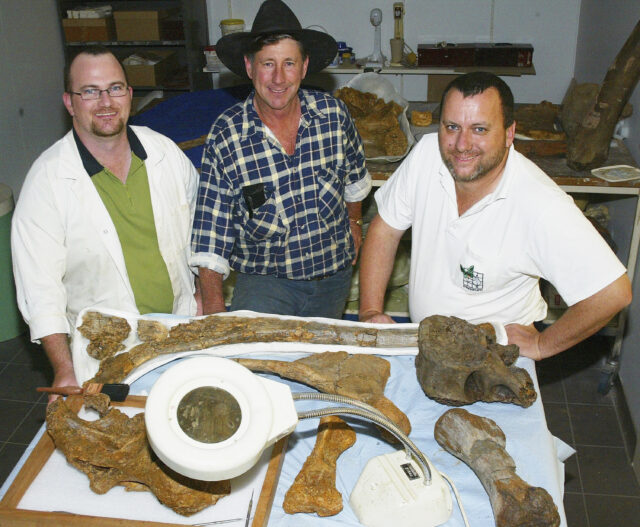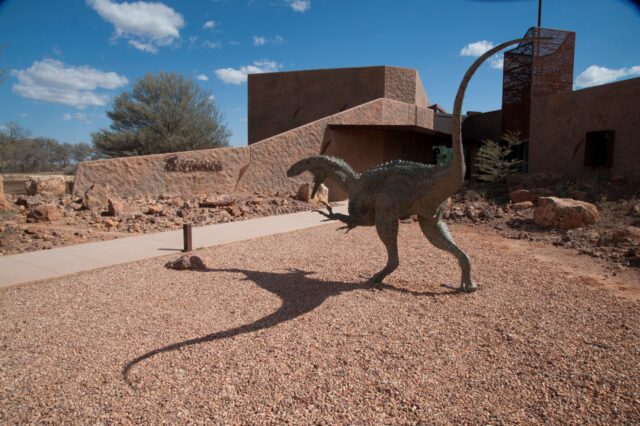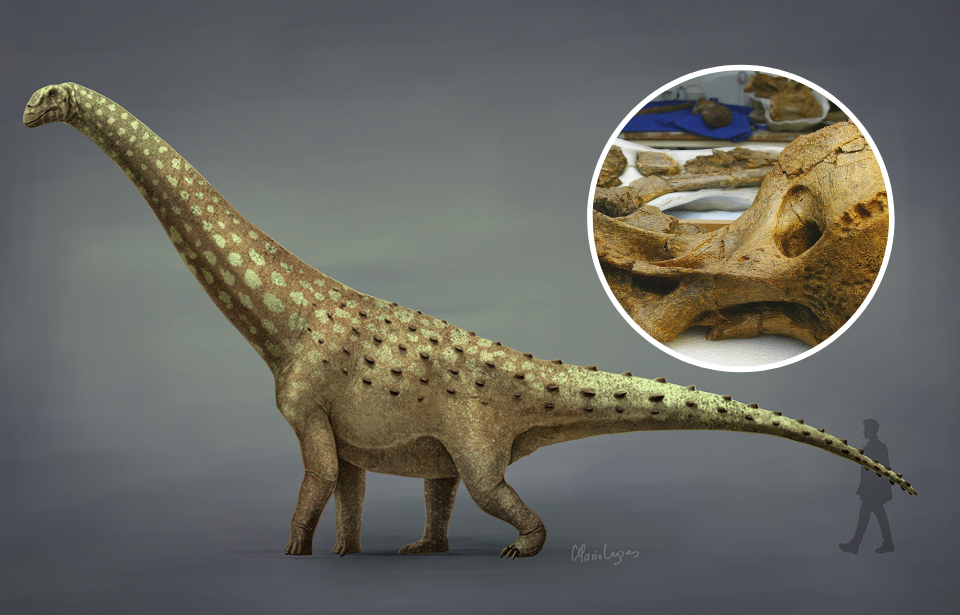Australia was once a place believed to be free of dinosaur fossils. Paleontologists of the past had very little luck in finding anything substantial there, and it wouldn’t be until farmers dug on their properties that the wealth of dinosaur fossils on the continent would be discovered. A tourism boom resulted from the finds, and now Australia is rewriting the history of the prehistoric creatures in the area.
A dinosaur skull was discovered in Winton, Queensland
The nearly complete skull of "Ann", a 95-million-year-old sauropod dinosaur was found in western Queensland.https://t.co/jh9sTey8Uu
— Tom Fitton (he/him) 🇺🇦 (@fittontom) April 13, 2023
A dinosaur skull was discovered in Queensland that belonged to a 95 million-year-old titanosaur, a type of sauropod – one of the largest land animals to have ever roamed the earth. It is the fourth-ever fossil of the specimen to be discovered and is the first nearly complete sauropod skull to ever be found in Australia. Identified as a Diamantinasauris matildae, the dinosaur the skull belonged to has been nicknamed “Ann.”
Dr. Stephen Poropat of Curtin University, who served as the lead researcher on the study, said that it was “really amazing to be able to find a skull at all – they’re quite rare, and even more so to get so much of one that had been preserved.” The skull was first discovered in 2018 but had not been reported until 2023.
As a titanosaur, Ann likely measured between 15 and 16 meters long from head to tail, with a weight between 23 and 25 tonnes. “As far as sauropods go, [Ann is] medium-sized,” Poropat explained. “The largest [sauropods] push 40 metres in length and 80 tonnes in mass.” Sauropods were long-necked dinosaurs that had tiny skulls when compared to their massive bodies.
When Ann’s skull was found, it was broken into many little pieces. A volunteer excavator described how they then found “a really weird-looking bit of bone that we eventually realised had to be a brain case. That then made all the other bits fall into place – we realised that we had a skull that had basically exploded and the bits were scattered around the back leg bones.”
Ann’s finding reinforces a scientific hypothesis

The nearly-complete skull allowed researchers to determine what the creature’s face may have looked like. “In some ways, the head looks very much like that of Brachiosaurus,” Poropat said. However, there are differences between its shape and teeth that differentiate it from the species. “When we see sauropods that were low feeders, they tend to have much narrower teeth, they tend to have snouts that are sort of squared-off, almost like vacuum cleaners,” he explained. With its more rounded snout, Ann likely wasn’t feeding close to the ground.
The skull instead shares a remarkable number of similarities to another titanosaur, the Sarmientosaurus musacchioi. This species lived in South America at the time, but the similarities are too distinct to be dismissed. “You could almost put Sarmientosaurus’s head on Diamantinasaurus’s body and barely be able to tell the difference,” Poropat said.
Finding Ann’s skull has helped to reinforce an already established hypothesis within the scientific community that sauropods traveled between South America and Australia. During the mid-Crustacean period, the now-icy continent looked much different, allowing for passage across the two land masses. “Because the world was extremely warm … the poles were vegetated, not covered in ice,” Poropat said. “It would seem that sauropods took advantage of this really warm period.”
Australia is experiencing a dinosaur boom

Prior to the 21st century, dinosaur discoveries in Australia were considered extremely rare. Paleontologists struggled to merge the gap between their profession and the existence of dinosaurs on the continent. However, in 1999, all that changed when a farmer named David Elliot came forward with several fossils found on his Winton property.
Several farmers in the southern outback have come across dinosaur fossils, but never brought them to anyone’s attention as they were nervous their farms would be taken from them for archaeological purposes. After stumbling over a strange-looking obstruction on his farm, Elliot knew he had to finally contact a paleontologist. It turned out that the strange obstruction was actually a giant fossilized thighbone from a 95 million-year-old sauropod.
As researchers began digging in the area, they realized dinosaur fossils were “bloody everywhere,” as described by Matt Herne, curator of the Australian Age of Dinosaurs Museum. By digging further down than previous paleontologists had done in the past, “you transition from not finding anything to finding everything,” said Scott Hucknell, a paleontologist at the Queensland Museum.
Instead of being a land barren of dinosaur fossils, Australia is teeming with them.
Tourists are happily getting involved

The dinosaur discoveries resulted in a paleo-tourism boom in the Australian outback. Previously, paleontologists left the country to try and establish a fruitful career for themselves elsewhere, where bones were known to be present. Now, those paleontologists are returning to participate in the boom.
More from us: This Australian City Was Accidentally Paved With Real Gold
Alongside professionals in the field, tourists are also flocking to the area to get their hands dirty in the search for dinosaur fossils. Volunteers are granted permission to join in one-week palaeontological digs at the price of $3700 AUD. While not everyone can afford to join on the ground level, others are heading to the area to view Elliot’s Australian Age of Dinosaurs Museum, with the site attracting 60,000 people in 2021.
